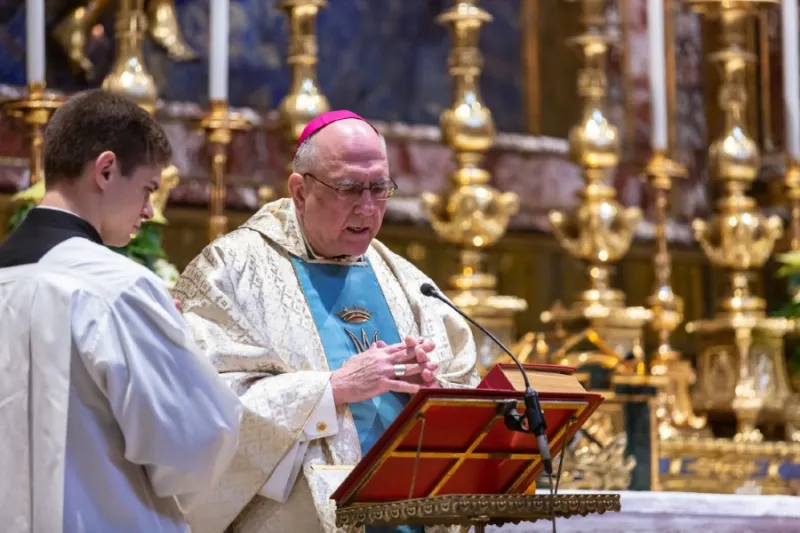
Washington D.C., Sep 17, 2021 / 15:02 pm (CNA).
The U.S. bishops’ conference on Friday warned against abortion funding in a massive spending bill being considered by Congress.
“Congress can, and must, turn back from including taxpayer funding of abortion, in the Build Back Better Act,” said Archbishop Joseph Naumann of Kansas City in Kansas, the chair of the U.S. bishops’ pro-life committee, and Archbishop Paul Coakley of Oklahoma City, chair of the bishops’ domestic justice and human development committee.
“We urge all members of Congress and the Administration to work in good faith to advance important and life-saving healthcare provisions without forcing Americans to pay for the deliberate destruction of unborn human life,” they stated.
This week, House committees advanced portions of a federal spending package that could ultimately total $3.5 trillion. The package would include various policy priorities of the Biden administration and congressional Democrats, such as funding of universal pre-K, free tuition for two-year community college, investments in “green” energy, and a pathway to citizenship for millions of immigrants.
Included in the health care portions of the package are some proposals supported by the U.S. bishops’ conference. These include expansion of Medicaid coverage, postpartum coverage for mothers, and funding of the Children’s Health Insurance Program (CHIP).
“Catholic bishops have been strong advocates for proposals at both the federal and state level that ensure all people will have access to affordable healthcare,” both Naumann and Coakley said on Friday.
“However, the legislative text advanced by the two House committees also funds abortion, the deliberate destruction of our most vulnerable brothers and sisters – those in the womb. This cannot be included,” they said.
Pro-life leaders have warned that health care spending in the bill could fund abortions, unless specific pro-life language is added to the legislation to block such funding. Federal dollars could fund abortion coverage through Affordable Care Act health subsidies and through the creation of a parallel Medicaid structure for states that refused to expand Medicaid.
Some members, such as Rep. Cathy McMorris-Rodgers (R-Wash.) and Rep. Debbie Lesko (R-Ariz.), tried to insert amendments to the reconciliation bill prohibiting abortion funding; those attempts were blocked this week, in hearings of the House Ways and Means Committee and House Energy and Commerce Committee.
The budget package would need to pass through the process of “reconciliation,” the process by which budget-related items can pass the Senate with only a simple majority vote. It is being considered in addition to the normal government funding “appropriations” bills for the 2022 fiscal year.
If you value the news and views Catholic World Report provides, please consider donating to support our efforts. Your contribution will help us continue to make CWR available to all readers worldwide for free, without a subscription. Thank you for your generosity!
Click here for more information on donating to CWR. Click here to sign up for our newsletter.




Aside from bemoaning on a ‘fait accompli’, will any of these clerics take their Faith seriously and turn to canon law and the Catechism…and actually…act on these ‘pious Catholic’ legislators???